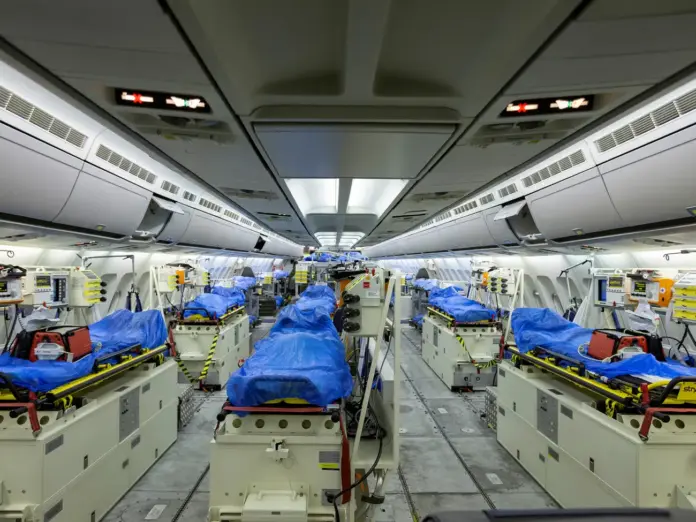
Article Excerpt:
A German Air Force Airbus A-310 “Medevac” transported six COVID-19 patients from Bergamo, Italy to the Cologne Bonn Airport to receive coronavirus treatment in Germany on March 28.
After arriving in Germany, the COVID-19 patients were brought to different hospitals for treatment, according to a tweet by the German Air Force known as the Luftwaffe. Germany has also opened its hospitals to more Italian coronavirus patients: as of March 26, about 50 COVID-19 patients from Italy are being treated in Germany, The Hill reported.
In total, the Airbus A310 “Medevac” that carried the six coronavirus passengers has six intensive care beds and enough room to transport 38 patients “lying down,” according to the Luftwaffe.
Analysis:
COVID-19 disrupted the medical sphere, and since then, we have seen many changes in the way we approach medica emergencies. Those who experienced life during the pandemic had never lived through anything of the sort before. Medical equipment was overwhelmed, and beds were filling up with the number of infected rising by the day. Solutions such as Airbus A-310 have been designed to combat this hospital overflow, and its transportability allows for medical care to be administered en-route to the destination medical facility.
Medical response vehicles are not universally equipped with the same medical equipment. Some vehicles may have ventilators and AEDs, and some may not. This can be problematic if the injured individual needs immediate care. Because of this, many response vehicles focus on transporting the injured as quickly as possible to a nearby facility where they can be treated. While medical response seems to be built around the idea of transporting the injured from the scene of injury to a “base” where care is administered, the introduction of the A-310 challenges this notion, and medical staff can provide care during transport.



